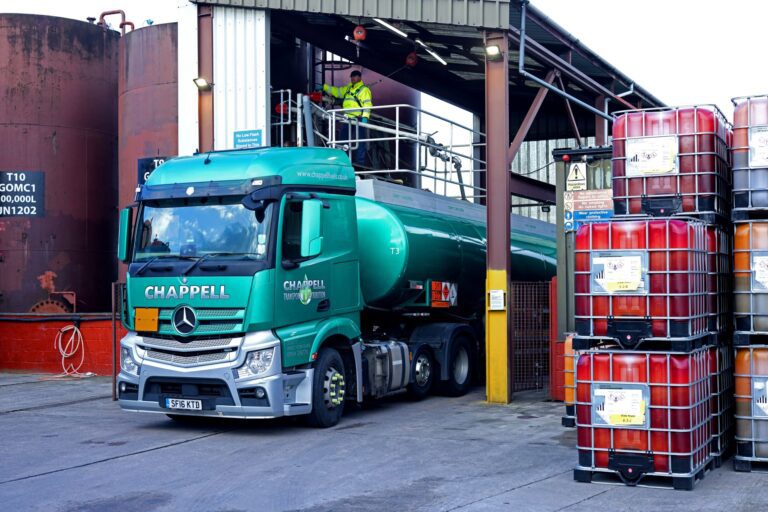
The advent of the UK Government’s Windsor Framework in relation to Northern Ireland means the province is subject to the EU’s fuel marking legislation for gas oil and kerosene – namely Directive 95/60/EC. This requires companies to use the new fiscal marker, Accutrace Plus (n-butyl phenyl ether, also known as butoxybenzene), selected by the European Commission to replace the original Euromarker, Solvent Yellow 124, as the common fiscal marker.
The wider UK market is mirroring this move, with HMRC confirming the “addition of this new marker” to “enhance the existing marking regime” and “maintain alignment with the fuel marking requirements in other jurisdictions, particularly Ireland, which will support ongoing efforts to tackle fuel fraud”.
In this transition period between regulations, there are two key dates and related actions to note:
First, by the 18 January 2024 deadline, companies need to mark fuels with Accutrace Plus at prescribed levels of between 12.5mg/L and 18.75mg/L of fuel.
Second, 1 December 2023 is the earliest date companies can add the new marker to rebated fuel. As HMRC explains, this “will enable businesses that mark fuel to manage their stocks of marking products by [using the marker] before it becomes mandatory”.
In the EU, member states will set a marking level of Accutrace Plus of at least 12,5 milligram per litre and not more than 18,75 milligram per litre of energy product. This corresponds to a marking level of at least 9,5 milligram of butoxybenzene per litre and not more than 14,25 milligram of butoxybenzene per litre of energy product.
In summary, the required markers for each fuel type in the UK from 18 January 2024 are:
1. Gas oil/biodiesel/gas oil bioblend/light oil for furnace fuel:
- Solvent yellow 124
- Accutrace S10
- n-butyl phenyl ether (Accutrace Plus)
- Quinizarin
- Colouring substance (red dye)
2. Kerosene and kerosene bioblend
- Solvent yellow 124
- Accutrace S10
- n-butyl phenyl ether (Accutrace Plus)
- Coumarin
What is the new chemical replacing Solvent Yellow 124?
According to Accutrace Plus manufacturer and trademark holder, Dow (US), the marker is “resistant to common chemical and physical laundering” and provides a “unique fingerprint in the fuel, which alerts authorities to its intended use and enhances supply chain governance and product identification”.
From an environmental perspective, Dow says that the marker “contains only elements commonly found in petroleum/petroleum derivatives without any known ozone-depleting additives or dioxin-emitting halocarbons.”
What is the impact on businesses that mark fuel and what are the risks to address?
The introduction of a new marker system demands detailed implementation plans to account for the new requirements needed by the deadline date of 18 January 2024.
This includes considering stock management, order reviews and product requirements during the winter period to ensure optimum stock levels and the ability to continue supplying the market with fuel.
Before 1 December this year, it is illegal to add Accutrace Plus into marked fuel. After that date, the aim is to add enough new marker into the fuel supply chain to ensure compliance by the January 18, 2024, deadline. Companies can achieve this by carefully managing stocks of previously marked fuel, plus adding new product. Managing previous marker concentrate stock is important, as this is disallowed after 18 January. With the aim of reducing the volume of Solvent Yellow 124, the new legal requirement for the product is over 3mg/L. Removing an upper limit enables companies to run down the previous product in their system without contravening the legislation.
Stock holding and disposal issues:
Distributors need to consider their stockholding of existing marker concentrate from today: not holding too much old stock of marker and ensuring they add new marker as early as possible to ensure compliance. This is because mixing old and new concentrate would dilute the new marker below the required concentration level (risking non-compliance with the regulations) and create unnecessary operational and cost issues.
As the UK doesn’t require removal of Solvent Yellow 124 by a certain deadline – and the transition involves adding a new material – we are looking at ways to support companies through this process.
What we, collectively as an industry, need to avoid is disposing of marker concentrate which is both toxic and difficult to discard safely.
Operational equipment, processes and procedures
Based on the physical properties of the new Accutrace Plus fuel marker, companies should be able to continue with their existing protocols.
With no change to the dosing of the formulated product, either for gas oil or kerosene, this should also mean that current equipment doesn’t require any modifications.
Technical data sheets are available which outline the new marker’s specific properties, including density and viscosity. Companies may want to verify that their pumping systems are compatible with these changes and should review the technical data to dose at the correct level to ensure compliance.
In addition, it’s necessary – when receiving any new material into a system – to review the safety requirements for handling it. Consulting the material safety data sheet and conducting an operational risk assessment is prudent, as well as informing customers about potential hazards and safety measures.
Managing the transition
Having fuel distribution customers in the EU – and with some early movers in transitioning to the new rules – we’ve had the chance to observe and support the shift in practice already.
In Germany alone, we’ve supplied 250,000L of new marker into the transition, which equates to a quarter-year’s supply in six weeks. To do this, companies concentrated on running down their previously marked fuel stocks and emptying marker concentrate tanks: the supply chain was emptied through June and July 2023, with new supplies starting in August.
The lessons learned from this mean that UK companies – starting from 1 December 2023 – need to empty their existing stocks while we ensure the new product is ready to go. This also requires collaboration with customers on the availability of road transport to ensure they get what they need in time.
Ahead of the transition period, we will supply companies with a range of marker concentrate samples under the new name, Dyeguard®*, to test, evaluate and ultimately meet the new requirements. And we have also conducted compatibility and stability trials and increased our resources and capabilities to support the change.
Indeed, one key advantage of our close collaboration with the regulatory authorities is being able to influence the formulation of certain marker products to the benefit of end users. For example, obtaining a reduction in the amount of Solvent Yellow 124 in the new Dyeguard® KMC 30 kerosene concentrate means companies won’t have to modify their dosing equipment to allow for a different dosage rate.
As HMRC emphasises in its guidance, “users of marker concentrate should contact their supplier to discuss their needs”. With the timescales as they are, we’d advise fuel distributors to do that sooner rather than later.
*Gas Oil Marker Concentrates:
Dyeguard® GOMC 0104: 1L Marker Dye Concentrate in 1,000L of fuelDyeguard® GOMC 0519: 1L of Marker Dye Concentrate in 5,000L of fuel
Kerosene Marker Concentrates:
Dyeguard® KMC1005: 1L of Marker Dye Concentrate in 10,000L of fuelDyeguard® KMC3015: 1L of Marker Dye Concentrate in 30,000L of fuel
Philip Double is Chief Operating Officer at John Hogg. A manufacturer of fuel marking technology, regulatory and specialist dyes, John Hogg is a trusted global partner to brands, businesses and government, supplying fuel marking systems that protect from fuel theft, counterfeiting, smuggling, adulteration and tax evasion and ensure regulatory compliance.
